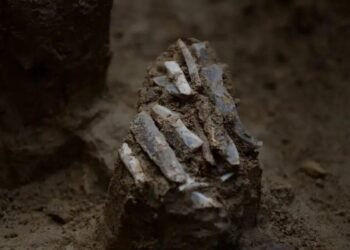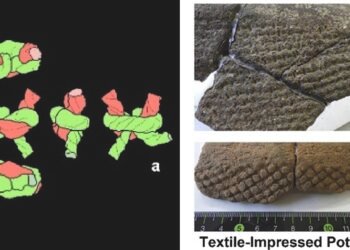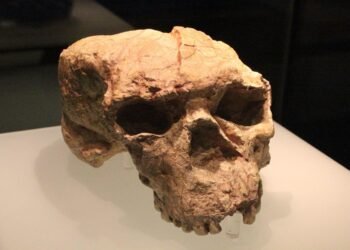Archaeologists in Serbia have unearthed dark new evidence of the brutal entertainment practices of the Roman Empire. Excavations at the site of Viminacium, a former thriving military base and provincial capital on the Danube border, revealed the fractured skull of a brown bear that was forced to participate in the bloody clashes of the amphitheater about 1,700 years ago.

The discovery, published in the journal Antiquity, is the first direct physical evidence that brown bears were used in Roman arena games. While written records and artwork have long indicated their use, no bone remains had ever conclusively established it until now.
The skull, belonging to a six-year-old male brown bear (Ursus arctos), was uncovered near the amphitheater entrance during the 2016 excavation. Multidisciplinary analyses revealed a somber story of prolonged captivity, repeated combat, and eventual death from an untreated injury. Radiological and microscopic examinations found that the animal had suffered a severe blow to the forehead — likely from a spear or other weapon held by a bestiarius, a fighter who battled with animals. The fracture did show signs of the healing process, but also massive infection, meaning the bear survived one fight only to die of disease before it could recover.

The skull showed highly worn teeth and jaw damage due to cage-chewing, a stress response common in captive animals. Researchers concluded that the bear had spent years in captivity, probably participating in many spectacles before meeting its end. Other animal remains, such as those of a leopard, were found in the area, confirming the amphitheater as a site of animal slaughter.

The second-century CE amphitheater at Viminacium could seat between 7,000 and 12,000 spectators, depending on its phase of use. Like the Colosseum in Rome, its daily entertainment schedule ran on a grim routine: morning venationes of animal fighting and hunting, midday executions, and gladiatorial contests in the afternoons. Bears featured prominently in the morning venationes, during which exotic creatures were set against hunters, other animals, or condemned prisoners.
Ancient sources report a huge Roman appetite for wild beasts, which supported a trade that spanned from Britain to North Africa. Merchants and professional hunters captured lions, leopards, elephants, and bears for shipment all over the empire. Brown bears, native to Europe and prized for their strength, were a staple of these shows. The Viminacium bear would have been captured locally in the Balkans, indicating how provincial arenas relied on regional wildlife instead of costly imported fauna.

The skull not only provides physical proof of Roman-era brown bears in games but also adds depth to our understanding of systemic cruelty at their heart. The infection that ravaged the animal’s wound, combined with its dental injuries and short lifespan, testifies to years of suffering endured for the fleeting amusement of thousands.
Viminacium was home to nearly 40,000 inhabitants and was a significant hub on the empire’s eastern frontier. Now, its remains are a testament to the often brutal realities of Roman existence.
























Comments 0